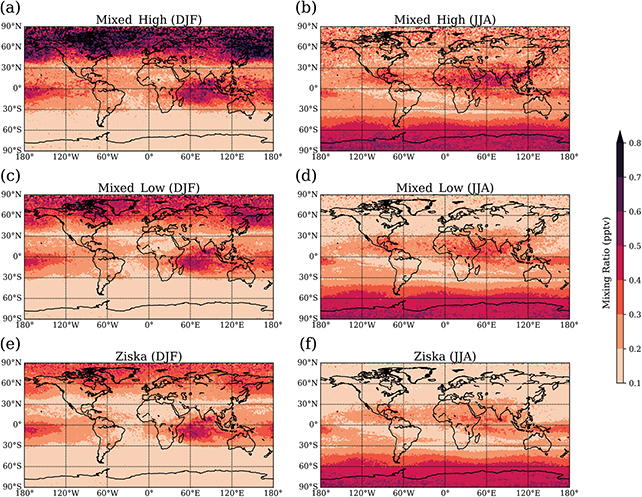Signed in 1987, the Montreal Protocol agreement led to a significant decrease in chemicals and pollutants known to damage Earth's precious ozone layer.
While their absence has allowed the protective gas to replenish high in the atmosphere, one damaging substance seems to have slipped through the cracks, potentially slowing the layer's repair or even putting its future at risk.
Scientists from the University of Saskatchewan in Canada led a study that has found human activity is releasing significantly more of the organic solvent bromoform (CHBr3) than previously assumed.
Produced by phytoplankton and algae, the compound was never considered for regulation by the protocol. Yet it is also a byproduct of chlorine's sterilization of water, expanding the range of sources we humans do have some control over. In fact, factoring in anthropogenic sources of the chemical bumps up its global levels by as much as nearly a third compared to previous estimates.
That increase has consequences for the ozone layer, which still needs as much protection as it can get. As bromoform decomposes, bromide is released, and bromide can significantly affect ozone depletion in the lower stratosphere.
"Bromoform (CHBr3) contributes to stratospheric ozone depletion but is not regulated under the Montreal Protocol due to its short lifetime and large natural sources," write the researchers in their published paper.
"Here, we show that anthropogenic sources contribute significantly to the amount of CHBr3 transported into the Northern Hemisphere (NH) extratropical stratosphere."
We know that these anthropogenic sources are concentrated mostly around the coasts due to industry and energy production. According to the researchers, this concentration could bump up emissions in the Northern Hemisphere by as much as 70.5 percent.
Existing data on bromoform emissions from ship ballast, power plants and desalination plants was combined in the study, and pushed through a series of simulation models to come up with the new estimate for CHBr3 levels.
"The largest fraction of the anthropogenic emissions stems from global power plants (10.3 percent – 25.9 percent of total CHBr3 emissions), while desalination (1.8 percent – 2.1 percent) and ship ballast water (0.1 percent – 0.3 percent) provide only small contributions," the researchers explain.

To verify their models further, the researchers compared their findings with recent measurements taken in the field by aircraft. They uncovered an "excellent agreement" between actual observations and the models.
"The anthropogenic CHBr3 emissions are centered at the coastal regions of the NH extratropics distributed around the centers of industry and energy production in Europe, North America, East Asia, and South Asia," write the researchers.
It's difficult to estimate how much bromoform is released from the oceans through sources like seaweed and phytoplankton. Scientists aren't sure on the exact mechanisms of its production, and don't have a whole lot of field data to work from.
These sources still account for more emissions than the sources related to human activity, but we're making a more significant contribution than previously realized – and at the moment there are no regulations to check bromoform emissions.
The Montreal Protocol has proved very effective at getting chemicals such as CFCs (chlorofluorocarbons) banned, keeping the ozone layer as a vital protection between us and ultraviolet radiation from the Sun. Based on these study's results, that agreement might need updating.
"CHBr3 emissions contribute to the stratospheric halogen loading and, thus, to ozone depletion," write the researchers. "While current oceanic emission inventories show large variations, all inventories assume natural oceanic production as the main CHBr3 source."
The research has been published in Geophysical Research Letters.
